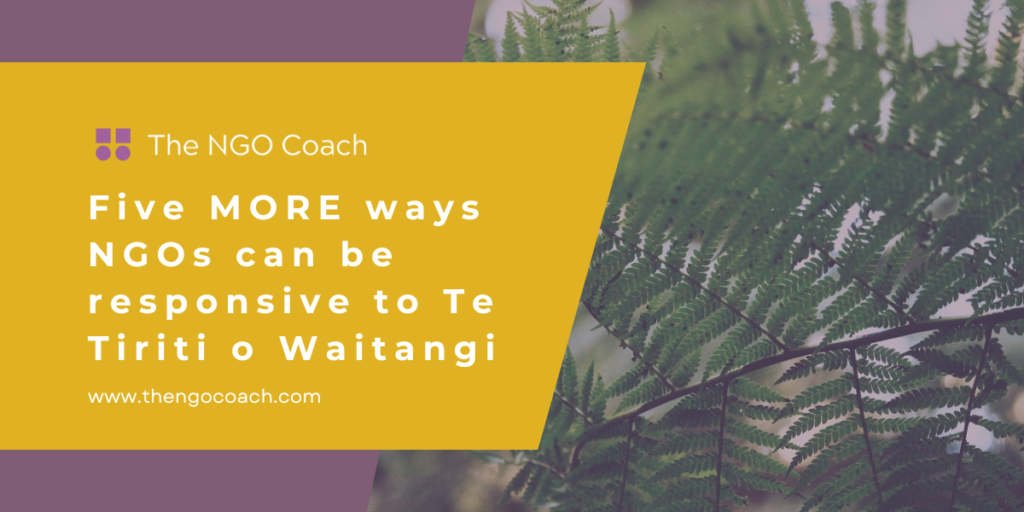When I last wrote about 5 ways to be responsive to Te Tiriti o Waitangi, I had at least another 5 things to share. So here is part 2 – 5 more ways to help your charity be responsiveness to Te Tiriti o Waitangi:
1. Engaging Māori (and Pacific) suppliers
Using the suppliers you’ve always used when running an NGO can be easy. Or, when looking for someone new, ask around your Pakeha mates, who then recommend other Pakeha suppliers. What if your NGO instead put money directly into the Maori economy? It’s one thing to be a service provider to Māori communities. It’s another to contribute your revenue directly into Māori-owned businesses to purchase the services you need. A good place to start finding new suppliers is the Whāriki Business Directory. Consider broadening your designers, photographers, videographers, researchers, project managers, consultants, trainers, accountants, information technology, accommodation, event management, human resources, catering, coaches and tradies.
2. Begin using Te Reo in your communication
Don’t let a lack of Te Reo competency within NGO charity deter you from using the language. Remember, everyone has to start somewhere when learning a new language! Begin by incorporating whakatauki / proverbs and common Māori words (Māori greetings, kai, mahi etc) in your communication channels (publications, social media, website). Increase your use over time as you begin to expand your vocabulary. The next step is to engage Te Reo expertise. The Translators and Interpreters Register by Te Taura Whiri i te Reo Māori Māori Language Commission is a great place to find the right person. As an aside, remember that language is not something that operates on its own. All language use is cultural, so be aware that things won’t always directly translate word-for-word and you’ll likely have to alter your messaging.
3. Use imagery that reflects a commitment to Te Tiriti o Waitangi
A quick way to see if you’re representing a commitment to Te Tiriti o Waitangi is your branding. What colours are you using in your brand? Is your branding uniquely New Zealand or could your logo be from anywhere? If you’re serving Māori communities, do you have any photos of them on your website? All of this imagery communicates something, whether you’re aware of it or not. In a previous organisation, we shifted our branding colour scheme and design assets to better reflect our commitment to Te Tiriti o Waitangi. If you don’t have professional photos of your mahi, try purchasing stock images from suppliers such as Truestock. There, you’ll find awesome images representing Aotearoa New Zealand’s diverse and multicultural communities.
4. Share your whakapapa on your website
Every charity has its own history – where you came from, how you started, who has been involved, where you’re based, and why. Sharing the whakapapa of your NGO will resonate with new people interested in working with or alongside you. It’s also a great historical exercise to capture important points in your charity’s journey. Knowing who your NGO is and where it belongs is an important part of your commitment to Te Tiriti o Waitangi. Whakapapa provides a sense of identity and history for both yourselves and others, and connects your NGO to the whenua / land.
5. Integrate Te Tiriti o Waitangi into Your Governance
Ensure that your NGO’s governance structure and policies explicitly reflect a commitment to Te Tiriti o Waitangi. This can include having Māori representation on your board, incorporating Te Tiriti principles into your strategic planning, and regularly reviewing your policies and practices to ensure they align with the principles. Demonstrating this commitment at the highest level of your organisation sends a strong message about your commitment to upholding Te Tiriti o Waitangi.

